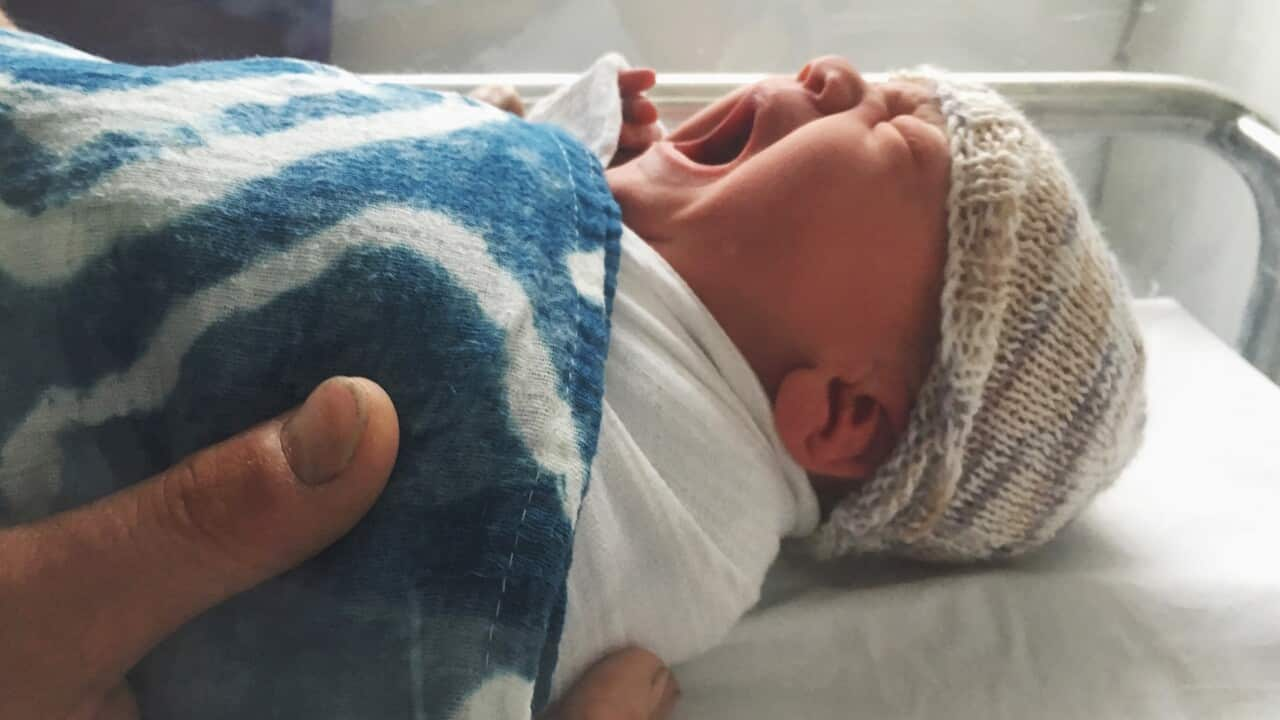Key Points
- There was a 6.7 per cent increase in the number of babies born in Australia in 2021 from the previous year.
- An Australian Institute of Health and Welfare report shows women are having babies later in life.
- The average age of a first time mum in Australia is almost 30 years old.
Having a baby in 2021 may have come with additional challenges due to different COVID-restrictions that were in place across Australia, yet the country saw a jump in the number of women giving birth that year.
New figures from the Australian Institute of Health and Welfare show a 6.7 per cent increase in the number of babies born in 2021 from the previous year.
More than 315,700 babies were born in Australia in 2021, about 20,000 more than the previous year according to the AIHW’s report, Australia’s mothers and babies.

An additional 20,000 babies were born in 2021 when compared to births from the previous year in Australia. Source: SBS News
Giving birth in Australia in 2021
AIHW spokesperson Deanna Eldridge said the birth rate for that year was 61 births per 1000 women of reproductive age (15–44 years) which is up from 56 births per 1000 women .
“But lower than the most recent peak in 2007 (66 births per 1000 women)," she said.
Depending on which state they were in, as restrictions differed from state to state, pregnant women in Australia during that time may have had to deal with different restrictions on partners at antenatal appointments throughout their pregnancy.
They may have also faced restricted visitor rules in maternity wards during labour and throughout their stay in hospital, as well as greater isolation due to lockdowns and social distancing rules.
Who was giving birth in 2021?
Maternity wards across Australia saw more than 16,000 Indian born mothers give birth.

Second to women born in Australia for those who were having babies in Australia in 2021 were women who were born in India. Source: SBS News
The report also showed that women are giving birth later in life, with one in four Australian women giving birth aged 35 years and over.

The proportion of women under the age of 25 who gave birth in 2021 was more than 6 per cent lower than a decade earlier. Source: SBS News
While women over 35 are at greater risk of complications in their pregnancies, the AIHW’s report showed that most mothers aged 35 years and above and their babies did well in 2021.
More than nine out of 10 babies born to older mums were born at-term and had a healthy birthweight (between 2.5kg and 4.499kg).
Health and wellbeing of Australian babies and mothers
The proportion of pre-term and low birthweight babies have remained stable over the past decade according to the AIHW’s report.
In 2021, 8.2 per cent of babies were born pre-term and 6.3 per cent had a low birth weight.

A little over 8 per cent of babies were born pre-term in 2021 and 6.3 per cent had a low birth weight. Source: SBS News / Jill Lehmann Photography
Fewer women are reporting smoking in pregnancy, with 8.7 per cent of mothers saying they smoked while pregnant, down more than 4 per cent a decade earlier.
Mothers aged 35 years or older were less likely to report smoking during pregnancy than their younger counterparts and were more likely to attend an antenatal visit in the first trimester.












